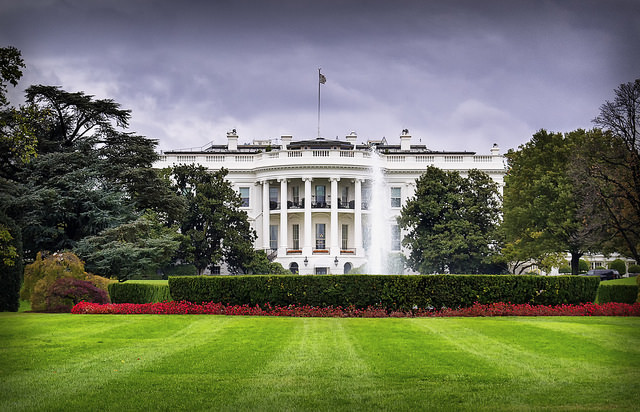A retreat into protectionism is a key part of Trump’s strategy to ‘make America great again’. He has an obvious distaste for trade agreements, formally withdrawing from the Trans-Pacific Partnership (TPP) Agreement and even threatening to withdraw from the North American Free Trade Agreement (NAFTA). If he gets his way, US trade policy may soon resemble the protectionism of the early post-war period.
It is no coincidence that in the 1970’s, when tariffs in Australia had reached very high levels, computable general equilibrium modelling was beginning to take root in Australia. Early applications of Australia’s flagship ORANI model were used to quantify the benefits of cutting tariffs.
High tariffs in Australia meant high costs, which were lethal for exporters. Through the 1970’s and 80’s, by cutting tariffs and importing the goods whose industries the tariffs were there to protect, Australia lost much of its high-cost manufacturing sector. But in its place, a more competitive Australia exported more agricultural, mining and high-end manufactured products, and ORANI showed that the net economic effects were positive. Today in the US, these arguments would apply in reverse if, as threatened by Trump on the campaign trail, the US imposed a 45 per cent tariff on imports from China.
ORANI has had an important impact on the development of many economic models, including the global GTAP model with consortium members that include the Asian Development Bank (ADB), the United Nations Conference on Trade and Development (UNCTAD) and the World Bank. Using GTAP to look firstly at the impact of just a US-China tariff and secondly at the impacts of a global outbreak of protectionism spurred by demonstration effects, I find that the world has little to fear from the former, but that the latter would take the world economy into recession.
Looking at a US-China tariff in isolation, there are two simple messages: that the tariffs won’t help US manufacturing, and that they won’t have a major impact on countries other than the US and China.
The intent of the tariffs — presumably to give local industry a leg up by removing competition from imports — is flawed. High tariffs on China won’t create a revival of manufacturing in the rustbelt. The United States will instead import more from other countries (China provides only about a sixth of US imports) and export less of its own manufacturing output, replacing Chinese imports without expanding domestic output. A smaller and less competitive United States will also use less manufactured goods.
There will not be a large adverse effect on other countries. For example, US tariffs on China would damage two of Australia’s largest three trading partners, reducing real income in China by an estimated 2 per cent and in the United States by 0.5 per cent. Despite this, the effects on Australia are mixed, and net out at close to zero.
While the US economy will be smaller, which sounds bad for Australian exports, the US will reduce Chinese imports and increase imports from everywhere else, including Australia. Also, the US will export less to the rest of the world, creating another opportunity for Australia to expand its exports.
The Chinese economy will also be smaller, which will be bad for Australian exporters — especially in the resources sector — but Australians will be able to access cheaper imports from China, improving Australia’s purchasing power. The rest of the world — like Australia — will be a little better off, which will have a positive impact on Australia.
Out of the jumble of bilateral impacts, the net result is that tariffs imposed by the US on China will have very little effect on Australia. At the sectoral level, there would be some shifting. For example, agriculture and resources (major exports to China) would be smaller, light manufacturing would be smaller (replaced by imports from China), and other manufacturing would be larger (due to export expansion into the United States and the rest of the world). Services would be larger as a result of a very slight overall expansion in the economy.
On their own, US tariffs on Chinese imports won’t cause widespread harm. But if they turn out to be the thin end of the wedge, the world economy is in for a rough ride indeed. The GTAP model finds that high tariffs on a global scale, reminiscent of the Smoot-Hawley Tariff Act and consequent retaliation of the Great Depression years, could reduce the volume of world trade by a third, taking many economies into recession. How likely is this scenario? It’s not the 1930’s, and while we have the World Trade Organization (WTO) doing what it can to promote freer trade, a new Smoot-Hawley era is unlikely to gain much traction. But, if we have learnt anything from Brexit and Trump, it is to take nothing for granted.





Recent Comments